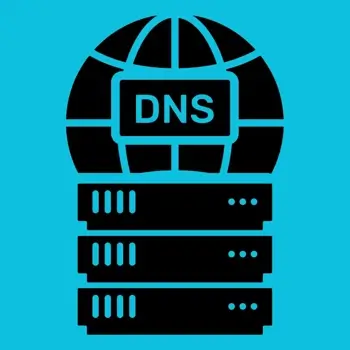Types of DNS Servers: A Comprehensive Guide
In order to bridge the communication gap between humans and computers, networking experts developed the domain name system (DNS), which resolves domain names to IP addresses. A DNS nameserver helps your computer find the IP address for the website you want to visit. In this article, learn what a DNS server is and how the different types - primary servers, secondary servers, caching servers, forwarding servers, and reverse servers - function.
What is a DNS server?
A DNS server is a dedicated computer server that translates domain names to numeric IP addresses which computers use to identify each other on a network. It is responsible for keeping the file that contains information about the domain names and corresponding IP addresses.

When you type a website address, like google.com, into your browser, your computer doesn't understand that name directly. Instead, it asks a DNS server to translate requests for names into IP addresses.
The purpose of domain name system servers is to answer any DNS queries. They are like signposts that direct your domain to a specific location on the Internet, such as a hosting provider or a parked page.
We’re not accustomed to dealing with numbers given there are millions of websites on the Internet. Thanks to DNS servers, you technically don’t need to memorize complex IP addresses of websites to retrieve a webpage.
You just type in the domain name and let the DNS nameserver resolve it to numbers for you. This translation process is called DNS resolution. The process allows computers to locate and communicate with one another on the Internet.
A domain name system server works for websites, mail servers, and anything else based on the domain name. Like anything else connected to the network, DNS servers can get attacked by bad actors. This can negatively impact users and businesses that rely on them for their operations - or, rather, the Internet as a whole.
How a DNS server works
A DNS server is an essential component of the Internet. Through the DNS resolution process, multiple servers work together to provide the correct IP address for a requested domain.
Computers don't understand domain names. They only understand numbers called IP addresses. What a domain name system server does is to translate human-readable domain names into machine-readable IP addresses.
It serves as a navigator that guides requests entered through your domain name to the specified destination in their settings.
When you type a domain name into your browser, it sends a request to a DNS server. This server checks its records to see if it knows the IP address corresponding to that domain name. If it does, it sends the IP address back to your computer.
In case the DNS nameserver doesn't have the IP address, it queries other DNS servers in a hierarchical system until it finds the correct information. Once your computer has the IP address, it can connect directly to the website. The process happens incredibly quickly, often within milliseconds, making it seamless for users.
DNS servers maintain different types of DNS records, which are used to map domain names to IP addresses and other information. Common types include A records, AAAA records, CNAME records, NS records, MX records, and SRV records.
Apart from records, another DNS component is the cache. Both domain servers and web browsers maintain a cache of DNS records to speed up the DNS resolution process.
Cached records allow subsequent queries for the same domain to be answered quickly without repeating the entire lookup process.
Types of DNS servers
There are different types of DNS servers, each playing a unique role in the DNS infrastructure. They include primary DNS servers, secondary DNS servers, caching DNS servers, forwarding DNS servers, and reverse DNS servers.
Primary DNS server
A primary domain name system server stores and manages DNS records for a specific domain. When a user enters a domain name, the browser contacts the primary DNS server first.
The server contains what is known as the controlling zone file. This file holds a text database with all a domain's DNS information, including its IP address, administrator contact details, and specific components like Time to Live (TTL).
TTL defines how long a DNS record stays valid in a local cache. Once a browser receives a response from the primary DNS server, it will keep the record for that amount of time before checking for an update.
If the primary server is available, it quickly returns the domain's IP address to the browser. The browser then connects to the website. If the primary server fails due to an outage, attack, or hardware issue, the browser contacts a secondary DNS server.
Secondary domain name system servers, also referred to as backup servers, have the master copy of these DNS records to keep users connected to the websites when the primary server is down.
DNS server configurations depend on the server administrator's settings. Each DNS zone is limited to one primary server to maintain consistency over the DNS records.
Domain registrars operate primary DNS servers for the domains they register. They manage DNS records on behalf of their customers so that websites and email services function correctly. Web hosting companies also maintain primary DNS servers for domains hosted on their platforms.
Secondary DNS server
A secondary DNS server replicates DNS records from the primary server. It preserves a read-only copy of the zone file from the primary DNS server.
The server can handle DNS queries for a domain but cannot change the zone files. Any updates to the zone file are received from the primary server through a process called zone transfer.
Secondary servers stay current with DNS records. If multiple secondary servers exist, one may act as a higher-tier server. Secondary domain name system servers are beneficial in various ways, including:
- Redundancy. They provide a backup if the primary server fails. Secondary servers make sure DNS resolution continues without interruption.
- Load balancing. The servers help distribute DNS queries, reducing the load on the primary server and preventing server overload.
- Geographical distribution. By placing secondary servers in different locations, DNS resolution speeds up for users in various regions.
- Zone transfer. Secondary servers allow the distribution of DNS information across multiple servers to maintain consistency in DNS records and reduce the risk of outdated information.
- Fault tolerance. Using secondary servers improves the DNS system's ability to function even when one or more servers face issues.
Secondary DNS servers are meant to fortify the overall reliability, speed, and effectiveness of the DNS system.
Caching DNS server
A caching DNS server, sometimes known as a caching-only server, performs queries, caches the answers, and returns the results to the requesting client. All this is done through a process called DNS caching.
The function of a caching server is to temporarily store DNS query results within a device, browser, network, or operating system (OS) to reduce latency.
When you request a web address, your computer contacts a domain name system server to resolve domain names to IP addresses. The server then stores the response in a temporary storage area, which is the DNS cache.
The next time a user requests the same address, the DNS cache provides the IP instead of contacting the DNS server again. Because of this, users access sites faster and use fewer resources.
DNS caching also allows users to navigate to a website even during potential DNS outages. Other benefits include better online experiences, traffic optimization, more bandwidth, offline access, and optimal distribution.
This DNS server type is especially important for high-traffic websites, as it can lower response times. However, hackers can at times hijack web sessions by changing the IP addresses associated with domain names.
Forwarding DNS server
A forwarding DNS server is a specialized type of DNS server that handles specific DNS queries by forwarding them to another designated domain name system server for resolution. This process is known as DNS forwarding.
DNS forwarding can be conditional or non-conditional. Conditional forwarding directs queries for specific domains to designated DNS servers. Non-conditional forwarding sends all unresolved queries to a designated DNS server, regardless of the domain.
When a DNS server receives a query it cannot resolve, it forwards the request to a forwarder, which is typically a more authoritative DNS server.
Managing network traffic becomes easy as a result. For instance, if a local DNS server cannot resolve a domain name, it forwards the query to another DNS server, which then resolves the domain name and returns the IP address to the original DNS server.
The benefits of using a forwarding DNS server are manifold. It improves efficiency by caching responses, enhances security, and simplifies DNS management.
Reverse DNS server
A reverse DNS (rDNS) server performs the opposite function of a regular DNS server. It provides a way to map IP addresses back to domain names – a process called reverse DNS lookup.
Reverse DNS lookups rely on pointer (PTR) records. These records store the IP address in reverse order, appending ".in-addr.arpa" for IPv4 addresses or ".ip6.arpa" for IPv6 addresses. For example, the IP address 192.0.2.1 would be stored as 1.2.0.192.in-addr.arp.
In a typical scenario, when you search for a website online, a domain name system server translates that name into an IP address. But in some situations, such as email delivery or network troubleshooting, you might need to identify the domain name associated with a specific IP address. A reverse DNS server handles this task.
Reverse DNS lookups are particularly useful in email systems. Mail servers use reverse DNS to verify the domain name associated with an IP address that sends an email.
Email clients use this approach to identify fraudulent emails. The email might be flagged as suspicious if the reverse DNS lookup fails or returns an unexpected result.
Another important use of reverse DNS is in logging and network management. System administrators often review IP addresses in their logs. A reverse DNS lookup lets them quickly see which domain or organization owns the IP address.
In summary, these types of DNS servers offer an additional layer of information and verification in network communications.
What does “DNS Server isn't responding” mean?
It’s no secret that most professionals depend heavily on the Internet nowadays. So, being denied access to the online resources you need, especially when searching for crucial information on your go-to websites, feels obstructive.
One frustrating cause of Internet access issues is the "DNS Server Not Responding" error. Your web browser won’t connect to the site in this case.
The issue occurs when, for some reason, the server fails to map hostnames to IP addresses correctly or when your browser can’t make contact with the server handling the translation.
You could have misconfigured network adapters and routers to incorrect DNS server addresses.
You can fix this error using these methods:
- Troubleshoot network connection problems. Run the network troubleshooter on your device, which can automatically identify and fix common connectivity issues.
- Connect with a different device. Try accessing the Internet on another device to determine if the issue lies with your original device or the network.
- Switch to another web browser. Opening a different web browser helps to see if the problem is specific to your current browser.
- Restart your modem or router. Power off your modem or router, wait a few seconds and then turn it back on to refresh your connection and potentially resolve DNS errors.
- Flush the DNS cache. Clear the DNS cache using a simple command in your device's terminal or command prompt to remove outdated records that might cause issues.
- Change your DNS server address. If your default DNS server isn’t working, adjust the DNS settings to use a different server, such as Google DNS, which can help bypass problems with your default server.
Security for all types of DNS servers
Like anything else connected to the Internet, all types of DNS servers can be compromised. One sign is when users experience a server failing to load websites or other online services.
DNS servers are vulnerable to a range of attacks, such as DNS cache poisoning. Attackers corrupt the domain name system server’s cache with false information, redirecting users to malicious websites.
Impersonation by malicious parties can lead to data breaches, too. DNS measures like DNSSEC, which is a suite of security protocols, are designed to protect DNS infrastructure from certain types of attacks.
Frequently asked questions
How do you find your DNS server?
You can find your domain name system server settings in your device's network settings or by using command-line tools like ipconfig (Windows) or ifconfig (Mac/Linux).
Can you change your DNS server?
Yes, users can switch to public DNS servers like Google or Cloudflare for faster and more secure browsing.
What happens if a DNS server fails?
Users can't access websites because domain names won't resolve to IP addresses.
What is a DNS lookup?
A DNS lookup is the process of querying DNS servers to find the IP address associated with a domain name.

